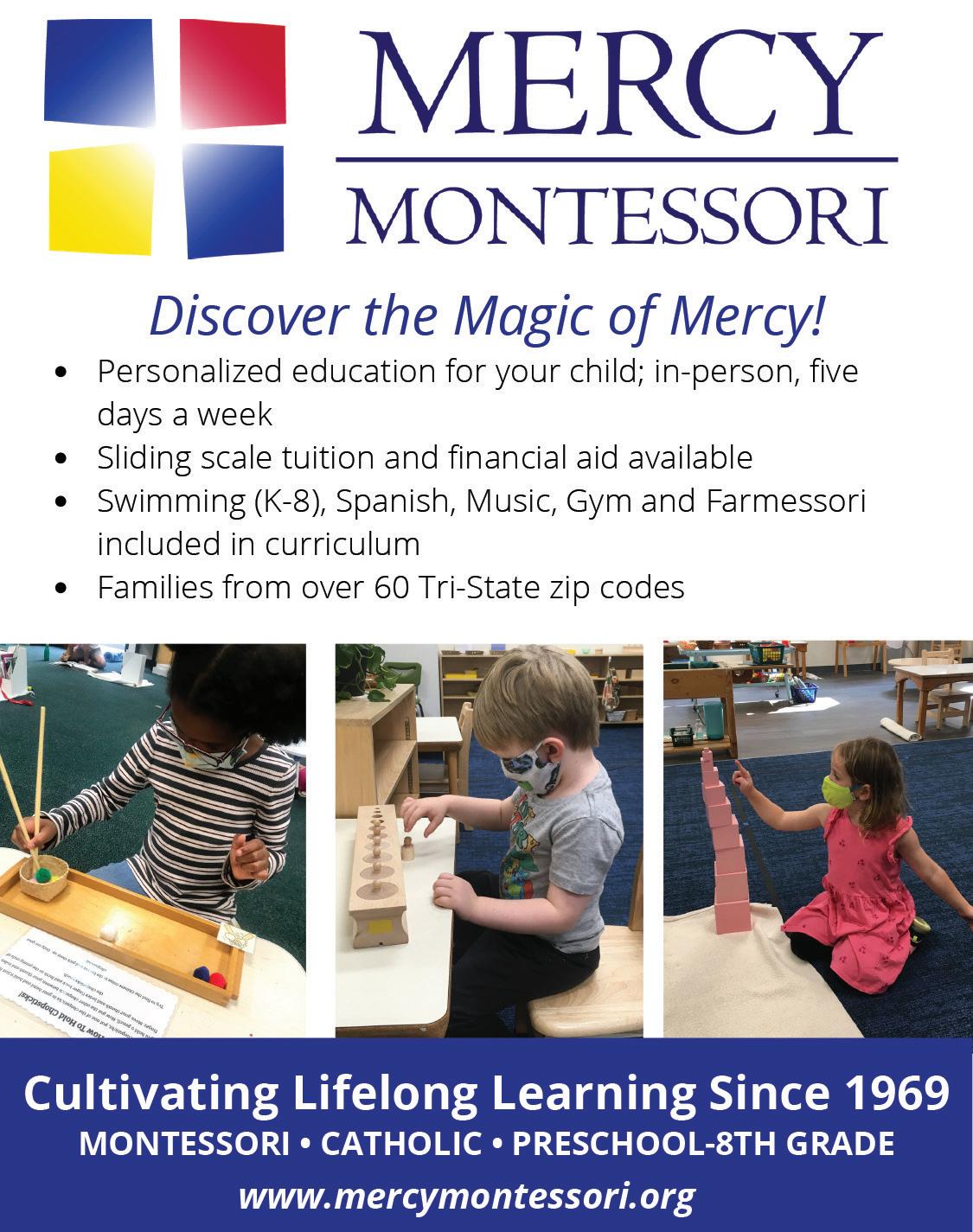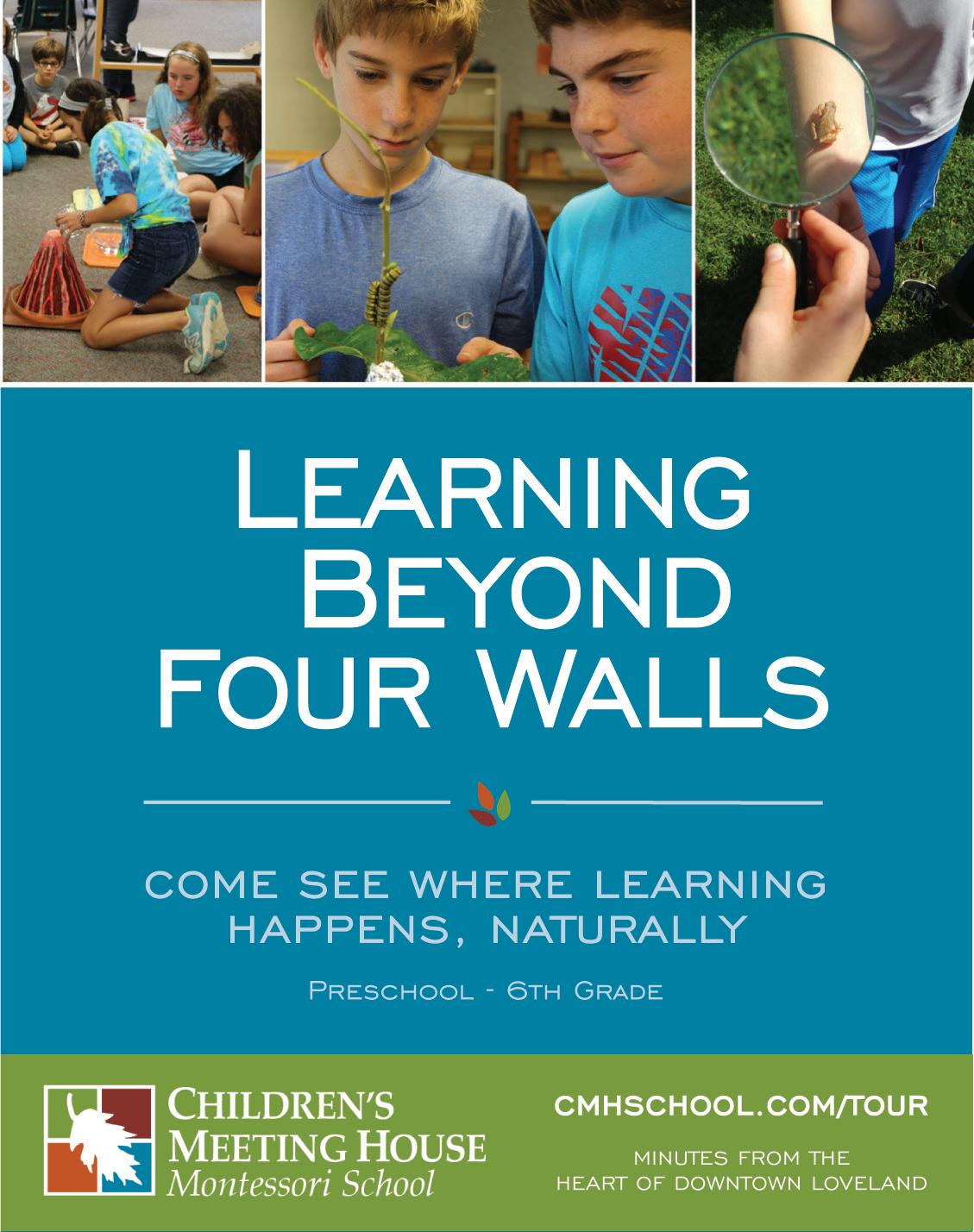
11 minute read
Local Spotlight: Skool Aid
Enriching the lives of children by providing quality virtual programming for southwest Ohio students.
2020 turned everything upside down, including the whole “school” experience. In-person instruction was replaced by distance learning, and extracurricular activities moved into the virtual sphere. Amid all this educational turmoil, Skool Aid remained steadfast in its commitment to providing local students high-quality enrichment programming.
Skool Aid was founded in May 2011 by Ian Smith, a Northern Kentuckian with more than 20 years of experience working with children. Skool Aid brings together talented educators with a variety of backgrounds to provide a wide range of enrichment programming in music, fitness, creative arts, drama and more, across all four corners of the tristate. But up until last year, Skool Aid’s programs had always been in person. But that changed with the introduction of Skool TV. Southwest Ohio Parent spoke with Smith about how the nonprofit pivoted to stay true to its mission of educating and empowering local kids, and what’s next for this organization.
Until last year, Skool Aid focused primarily on inperson enrichment. How has that changed?
Before the pandemic, we averaged 50-60 in-person classes and presentations per week at schools across the tristate area, offering everything from classes in STEM and language arts to the performing and visual arts. Now, most of our classes are done [live] virtually via Zoom or Google Meet, but we’re also offering on-demand activities (prerecorded videos) as an option. We've had to get creative during this time, but we’re still able to connect our teaching artists with students and families.
Tell us about Skool TV.
Skool TV is our newest way to bring enrichment to kids and families. It’s a subscription to all of our on-demand classes and activities. We currently have over 120 activities available on Skool TV, and will be adding more as we increase subscribers. We have activities in everything: music, science, nature, fitness, wellness, art, dance, culture — you name it! A subscription to Skool TV can be purchased by a household for $15/month. We also offer the subscription to schools at a discounted rate so that all of their families have access to it.
Many kids are burned out from screen time. How is Skool TV different from other virtual offerings?
I completely get that — I have a 10 year old myself. The last thing I want to do is give kids more screen time. And with Skool TV, the video is simply our vehicle for the delivery of enrichment. Typically, videos are only around 10 minutes long; the teaching artist encourages students to do an activity off screen, anything from making a craft or cooking a meal, to playing a game or learning a dance.
How does Skool TV support local artists?
Almost all of our activities are made by passionate local artists. We have musicians teaching music, artists teaching art, athletes teaching athletics. What makes Skool Aid unique is that our programs are formed by the passionate teaching artists who work for the organization.
All of the videos [on Skool TV] have either been purchased outright, or the creators are paid royalties as the videos are used. We are excited that we are still able to help support our teaching artists during this time — just in different ways.
Looking ahead, what are your hopes for Skool Aid?
We are most excited to get to the end of this pandemic and be able to work with students in-person again. We miss doing assembly presentations, playing wheelchair basketball with schools and giving high fives to kids. But, I think we've done everything we can to connect with kids during this pandemic, and I’m excited for the future.
To learn more about Skool Aid or subscribe to Skool TV, visit skoolaid.com.




PLANNING FOR PREGNANCY
Gear up for pregnancy by getting healthy — mentally and physically — before trying to conceive.
WORDS BY RACHAEL DUPREE
he decision to have a baby is exciting, whether you’ll be a first-time mom or are hoping t to grow your family. As you’re trying to conceive, perhaps more than ever, it’s time to make your health your No. 1 priority. Bringing new life into the world will require both physical and mental strength, so here are some tips for getting your body and mind ready as you approach the beautiful journey ahead.
Maximize Your Nutrition
Even before you conceive, begin eating and drinking like a pregnant woman, recommends Dr. Kristin Coppage, MD, a maternal-fetal medicine specialist at Good Samaritan Hospital’s Department of Obstetrics and Gynecology in Cincinnati. Fill your diet with fresh whole foods and lots of water, and cut out processed foods, sugar, caffeine and alcohol. Folic acid and omega-3s are two nutrients especially important for expectant mothers. Folic acid helps prevent neural tube defects in the developing fetus, and can be obtained by eating leafy greens, beans, nuts and seeds. Omega-3s, particularly DHA and EPA, contribute to healthy brain and retina development in the baby and can help prevent perinatal depression. Eating 6 ounces of fatty fish, such as sardines, salmon, light tuna and anchovies, twice a week can provide you with these nutrients. (Note: High mercury levels in fish can impact a baby's brain development. Find guidance on fish safety here: fda.gov/food/ consumers/advice-about-eating-fish.)

Doctors also advise starting a prenatal up to six months before trying to conceive to give your body a boost of these and other important nutrients.
Move Your Body
If you don’t already regularly exercise, now’s the time to start. Even if balancing a tight schedule, try working up to the doctor-recommended 150 minutes per week, and focus on low-impact exercises, such as walking, swimming or yoga. “Your OBGYN can help you determine the most appropriate type of exercise for you based on your health status, medical conditions and any complications in your pregnancy,” Coppage says.
Schedule Rest
According to Cincinnati perinatal mental health therapist Joslyn Reedy-Kay, MSSA, LISW-S, lack of sleep is one of the leading causes of postpartum depression and anxiety, so developing good sleep habits now is key. Get the advised seven to nine hours of sleep per night by starting a relaxing bedtime routine, turn off screens an hour before bedtime, and minimize caffeine and alcohol consumption. If you work a physically grueling or time-consuming job, you may start considering ways to ease up a bit to accommodate your pregnant body.
Review Your Medications
If you’re on any medications, check their safety for use during pregnancy. Work with your OBGYN, primary care physician or mental health therapist to find replacement medications or taper doses if necessary. OBGYNs without a background in psychiatric medications can call Postpartum Support International’s Perinatal Psychiatric Consult Line to speak directly to a reproductive psychiatrist to determine an appropriate medication for an expectant mother.
Process Past Trauma
For some women, past experiences, such as a pregnancy loss or birth trauma, can bring up a lot of emotions when trying to conceive again. “One thing to know is that you will be more anxious during the pregnancy, and that’s an appropriate nervous system response,” Reedy-Kay says. She recommends seeking a trauma therapist or support group to help you process that event.
Let Go of Expectations
Every fertility journey and pregnancy is different. You won’t necessarily become pregnant during a certain time frame or feel a certain way when you do. “Try to focus on your own unique experience and don’t let others influence how things should be,” Reedy-Kay says. If necessary, turn off or limit social media and set boundaries with real-life people. Use this time instead to focus on things you can control, like your health, and to talk with your partner about the values you want to live into as a family.
Find Outlets for Stress
Finding a way to release stress can be helpful when coping with the changes that go along with conception and pregnancy. While each woman’s way of relieving stress will look different, says Reedy-Kay, some things to explore adding to your daily routine include movement techniques, deep breathing, journaling, meditation, creative expression, and even crying and hugs.
Build Your Team
Use the time while trying to conceive to build up your pregnancy support network. These people can include your partner, supportive family and friends, and birth professionals, like an OBGYN or midwife, mental health therapist, and doula. Also schedule a check-up with your physician and dentist, and consider adding specialists, like a chiropractor or acupuncturist, who may help get you with body alignment for pregnancy and birth.
Above all, as you embark on this journey, take care of yourself and allow yourself space to experience this transitional phase with openness and love.
WORDS BY JENNIFER THOMPSON
’m sure you have heard of Montessori education, but have you wondered exactly what that means? With so many options available for education, it can be hard to keep it all straight. Montessori classrooms differ from what is commonly found in the traditional classroom and can help to build a foundation for lifelong learning. So what makes Montessori schools different?
The Montessori curriculum and philosophy of education was developed over 100 years ago and is based on the scientific findings of Maria Montessori. Over the past 100 years, very little has changed in Montessori education.
So what are those things? What makes the Montessori classroom different? And how do you know what will be the best fit for your child? These questions can be challenging for parents who are considering different approaches to education. For parents who are considering Montessori education, here are five things that separate it from the bunch.
Classrooms are multi-age.
In this environment, with older and younger children learning together, the older children are able to work on their leadership skills in the classroom and help their younger friends, as they had once been helped themselves.
“The three-year age grouping that is typical of Montessori schools allows younger children to develop an interest in learning new materials used by the older children and also gives older children a chance to solidify their learning by teaching younger children,” says Laurie Kemp, co-head of school at Gloria Dei Montessori School in Dayton. “A great deal of interest in the curriculum is generated among the children by the other children in the class.”
Hands-on, cooperative learning is encouraged.
Montessori education emphasizes learning through the five senses. Stations are set up around the classroom, according to subject, for
children to explore. You might see stations for cooking, gardening, cleaning, art, music, library, caring for animals, science and more.
There is no limit to how long a child can stay at a station or work on a particular subject. Once a child takes work off a shelf, they are able to work with it all day, and again the next day if they wish. Repetition is an important part of education, and curiosity and a desire to learn is the child’s guide.
During the day, all subjects are being studied, and information is being introduced when children are most tuned into that information. As children move about the room from station to station, they learn to work both independently, and cooperatively, with their friends.
The joy of learning is celebrated.
“Every item is taught with a calm, measured delivery that is full of pregnant pauses, slow-moving hands, encouraging attention to details and self-discovery,” Kemp says. “Most materials are selfcorrecting, so guides do not have to correct children as often. Most Montessori guides do not answer questions so much as guide children in finding their own answers. My son told me at 4 or 5 years old that his teacher showed him ‘the work he wanted to learn.’ There is often great respect for the Montessori guides or facilitators or teachers because they have created an enticing environment for their particular age group and, through close observation, for each individual child.”
Students are free to follow their interests.
Students are encouraged to work at their own pace, and to explore what interests them. They choose their own work based on the lessons they have had, and are able to enjoy the confidence that comes from mastering tasks. Students also learn to inhibit impulses to take lessons that are only mildly interesting. They are led by their curiosity and self motivation, with trained and certified Montessori teachers on hand to assist when needed.
Education is individualized and focuses on the whole child.
“There are a few things that I feel are unique to Montessori education, but there are two principles, in particular, which drew me to this field of education,” says Lisa Emery, M.Ed., early childhood director at Montessori Academy of Cincinnati. “The first is the fact that it is so individualized. Children are not all going to be the same. They are unique in their academic abilities and it only makes sense to teach to these skills and move them through the curriculum accordingly. For example, they may be very advanced in one area, and as such, should have the opportunity to move forward without limits. Transversely, they may need more assistance in another area and should be given more instruction and time with these concepts to be able to thoroughly understand what is being taught.”
At a Montessori school, differences are respected and celebrated. Children are encouraged to work at their own pace, and are driven by their desire to learn, in an environment that fosters curiosity, wonder and exploration. As they work with their friends, and are nurtured and encouraged by their teachers, a lifelong love of learning will be developed — and this love of learning will hopefully last a lifetime.










